Related Research Articles

Dame Jane Morris Goodall, formerly Baroness Jane van Lawick-Goodall, is an English primatologist and anthropologist. She is considered the world's foremost expert on chimpanzees, after 60 years' studying the social and family interactions of wild chimpanzees. Goodall first went to Gombe Stream National Park in Tanzania to observe its chimpanzees in 1960.
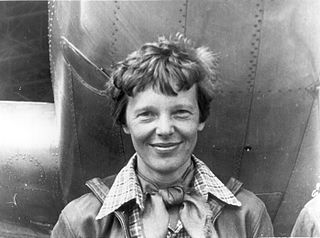
Amelia Mary Earhart was an American aviation pioneer and writer. Earhart was the first female aviator to fly solo across the Atlantic Ocean. She set many other records, was one of the first aviators to promote commercial air travel, wrote best-selling books about her flying experiences, and was instrumental in the formation of The Ninety-Nines, an organization for female pilots.
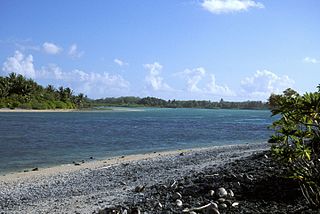
Nikumaroro, previously known as Kemins Island or Gardner Island, is a part of the Phoenix Islands, Kiribati, in the western Pacific Ocean. It is a remote, elongated, triangular coral atoll with profuse vegetation and a large central marine lagoon. Nikumaroro is about 7.5 km (4.7 mi) long by 2.5 km (1.6 mi) wide. The rim has two narrow entrances, both of which are blocked by a wide reef, which is dry at low tide. The ocean beyond the reef is very deep, and the only anchorage is at the island's west end, across the reef from the ruins of a mid-20th-century British colonial village, but this is safe only with the southeast trade winds. Landing has always been difficult and is most often done south of the anchorage. Although occupied at various times during the past, the island is uninhabited today.

Sylvia Alice Earle is an American marine biologist, oceanographer, explorer, author, and lecturer. She has been a National Geographic Explorer at Large since 1998. Earle was the first female chief scientist of the U.S. National Oceanic and Atmospheric Administration, and was named by Time Magazine as its first Hero for the Planet in 1998.

Frederick Joseph "Fred" Noonan was an American flight navigator, sea captain and aviation pioneer, who first charted many commercial airline routes across the Pacific Ocean during the 1930s. As the flight navigator for famed aviator Amelia Earhart in their pioneering attempt at circumnavigating the globe, they disappeared somewhere over the central Pacific Ocean on July 2, 1937.

George Palmer Putnam was an American publisher, writer and explorer. Known for his marriage to Amelia Earhart, he had also achieved fame as one of the most successful promoters in the United States during the 1930s.

Arlene Blum is an American mountaineer, writer, and environmental health scientist. She is best known for leading the first successful American ascent of Annapurna (I), a climb that was also an all-woman ascent. She led the first all-woman ascent of Denali, and was the first American woman to attempt Mount Everest. She is Executive Director of the Green Science Policy Institute.
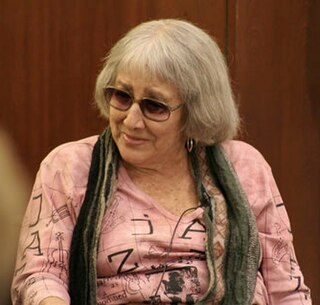
Eugenie Clark, popularly known as The Shark Lady, was an American ichthyologist known for both her research on shark behavior and her study of fish in the order Tetraodontiformes. Clark was a pioneer in the field of scuba diving for research purposes. In addition to being regarded as an authority in marine biology, Clark was popularly recognized and used her fame to promote marine conservation.

Blair Niles was an American novelist and travel writer. She was a founding member of the Society of Woman Geographers.

Matthew Williams Stirling was an American ethnologist, archaeologist and later an administrator at several scientific institutions in the field. He is best known for his discoveries relating to the Olmec civilization. Much of his work was done with his "wife and constant collaborator" of 42 years Marion Stirling.

Elgen Marion Long was an American aviator and author who set fifteen aviation records and firsts, including his 1971 flight around the world over both poles. He received the FAI Gold Air Medal for his accomplishment. He developed the "Crash and Sink" theory explaining the disappearance of Amelia Earhart and Fred Noonan. For over 35 years, Long researched the last leg of Earhart and Noonan's flight in an attempt to determine where their Lockheed Electra may have crashed. He and his wife, Marie Katherine Long, documented the people and data involved in the disappearance, a collection that is held by the SeaWord Foundation.

Mary Anita "Neta" Snook Southern was a pioneer aviator who achieved a long list of firsts. She was the first woman aviator in Iowa, first woman student accepted at the Curtiss Flying School in Virginia, first woman aviator to run her own aviation business and first woman to run a commercial airfield. Yet "Snooky", as her friends called her, was fated to be remembered for her relationship to Amelia Earhart. Her autobiography I Taught Amelia to Fly captures the essence of her fame and she is linked to Earhart, as her first instructor.
Mary Hastings Bradley was a traveler and author. She was the mother of the author Alice Sheldon.
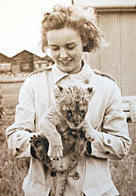
Rachael Mary Upjohn Light Meader was an American aerial photographer and explorer. Heir to the Upjohn Company fortune, she is best known in aerial circles for her 35,000-mile (56,000 km) flight in 1937–1938, during which she photographed unprecedented images of South America and Africa. Her African photographs were later featured in the book Focus on Africa. In her later years, she also became known in her native Kalamazoo, Michigan, for her philanthropy to Western Michigan University, the University of Michigan, and various Kalamazoo charities.

Brenda Putnam was an American sculptor, teacher and author.

Susan D. Shaw was an American environmental health scientist, marine toxicologist, explorer, ocean conservationist, and author. A Doctor of Public Health, she was a professor in the Department of Environmental Health Sciences at the School of Public Health at the State University of New York at Albany, and Founder/President of the Shaw Institute, a nonprofit scientific institution with a mission to improve human and ecological health through innovative science and strategic partnerships. Shaw is globally recognized for pioneering high-impact environmental research on ocean pollution, climate change, oil spills, and plastics that has fueled public policy over three decades. In 1983, with landscape photographer Ansel Adams, she published Overexposure, the first book to document the health hazards of photographic chemicals. Shaw is credited as the first scientist to show that brominated flame retardant chemicals used in consumer products have contaminated marine mammals and commercially important fish stocks in the northwest Atlantic Ocean. She became the first scientist to dive into the Gulf of Mexico oil slick following the 2010 BP Deepwater Horizon oil rig explosion to investigate the impacts of chemical dispersants used in response to the spill.
María Constanza Ceruti is an Argentine anthropologist and mountaineer, who has done more than 80 field surveys, most of them as part of National Geographic teams in Andean regions of Argentina, Chile, Bolivia, Ecuador and Peru. Her most important finding are the Children of Llullaillaco, considered the best preserved mummies in the world by the Guinness World Records. She is also the first woman worldwide to specialize in high-altitude archaeology, studying Inca ceremonial centers on the summits of Andean peaks above 6000 meters. She is a pioneer in the anthropological study of sacred mountains around the world, and in the emerging field of glacial archaeology.
Rae Natalie Prosser de Goodall also known as Natalie Goodall, was a biologist based in Tierra del Fuego Province, Argentina and known for studying the region's flora and fauna.
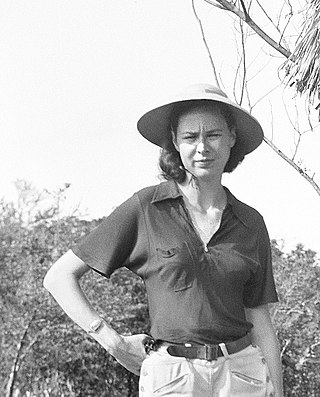
Marion Stirling Pugh was an American archaeologist. She is known for her archaeological expeditions to Tres Zapotes and other sites in Southern Mexico in the 1940s, conducted alongside her husband Matthew Stirling, which according to National Geographic "essentially rewrote Mesoamerican history". Her discovery of a date in the Long Count calendar, corresponding to 32 BCE, on a stela from Tres Zapotes, helped establish the antiquity of the Olmec civilization for the first time. She also served as the president of the Washington Textile Museum, and the Society of Woman Geographers twice.
References
- 1 2 3 Ware, Susan (1988). Letter to the World: Seven Women who Shaped the American Century. New York: W.W. Norton. ISBN 0-393-04652-4.
- ↑ Eppinga, J. (2009). They Made Their Mark: An Illustrated History of the Society of Woman Geographers. Globe Pequot. pp. 218–220. ISBN 978-0-7627-4597-5.
- ↑ "What is "The Society of Woman Geographers"?". Alan Squire Publishing. May 27, 2019. Retrieved 5 February 2020.
- ↑ "About The Society of Woman Geographers". The Society of Woman Geographers. Retrieved 4 February 2020.
- ↑ White, April (April 12, 2017). "The Intrepid '20s Women Who Formed an All-Female Global Exploration Society Excluded from the men-only Explorers Club, they established their own group for adventurers". Atlas Obscura. Retrieved 31 January 2020.
- ↑ Olds, Elizabeth (1985). Women of the Four Winds . Boston: Houghton Mifflin. ISBN 0-395-36199-0.
- ↑ Anema, Durlynn (2004). Harriet Chalmers Adams: Adventurer and Explorer. Aurora, Colorado: National Writers Press. ISBN 0-88100-131-7.
- ↑ "Marion Stirling Pugh, 89". Washington Post. ISSN 0190-8286 . Retrieved 2020-05-14.
- 1 2 3 4 5 6 7 8 9 10 11 12 13 14 15 16 17 18 19 20 21 22 "SWG Gold Medalists". Society of Woman Geographers. Retrieved 3 February 2020.
- ↑ "CONICET researcher wins Gold Medal of International Society of Woman Geographers". National Scientific and Technical Research Council - Argentina. 2017. Retrieved 31 January 2020.
- ↑ "Mountain Researcher Constanza Ceruti Gold Medalist of the ISWG". Mountain Research Initiative. 10 July 2017. Retrieved 31 January 2020.
- ↑ "Rebecca Lee - Graphic designer and polar researcher". South China Morning Post. 2014. Retrieved 3 February 2020.
- ↑ "Susan D. Shaw, Dr.P.H., FN '07". The Explorer's Club. Retrieved 3 February 2020.
- ↑ Hewitt, Rich (May 4, 2011). "Marine research institute director to receive national awards". Bangor Daily News.
- ↑ Scardina, Julie; Flocken, Jeff (March 6, 2012). Wildlife heroes : 40 leading conservationists and the animals they are committed to saving . Running Press. p. 38. ISBN 9780762443192.
- ↑ Pike, Kaitlin (February 15, 2005). "Field Lauds Atwater's Earth-Shaking Work". The Daily Nexus. University of California, Santa Barbara. Retrieved 3 February 2020.
- ↑ "A Society of Their Own". The Buzz. March 5, 2019. Retrieved 3 February 2020.
- ↑ Petura, Barbara. "A Conversation with Pam Flowers Musher, Explorer, Author". Working Dog Web. Retrieved 3 February 2020.
- ↑ Bodin, Madeline (July 5, 2016). "The Museum at the End of the World". Hakai Magazine. Retrieved 3 February 2020.
- ↑ Holmes, Madelyn (2004). American Women Conservationists: Twelve Profiles. McFarland & Company. pp. 156–160.
- ↑ "Pennant, Society of Women [sic] Geographers, STS 41-G, Sullivan". Smithsonian National Air and Space Museum. Retrieved 3 February 2020.
- ↑ Yount, Lisa (2007). A to Z of Women in Science and Math. Infobase Publishing. pp. 75–77. Retrieved 3 February 2020.
- ↑ "Awards and Distinctions". Jane Goodall Institute. Retrieved 3 February 2020.
- ↑ "Blum, Arlene (1945—)". Women in World History: A Biographical Encyclopedia. Retrieved 3 February 2020.
- ↑ "Arlene Blum papers, M1558". Online Archive of California. Retrieved 3 February 2020.
- ↑ Nichols, C. Reid; Porter, David; Williams, Robert G. (2003). Recent Advances and Issues in Oceanography. Greenwood Publishing Group. p. 162. Retrieved 3 February 2020.
- ↑ Morell, Virginia (1995). Ancestral Passions: The Leakey Family and the Quest for Humankind's Beginnings. New York: Simon and Schuster. p. 448.
- ↑ "Matthew Williams Stirling and Marion Stirling Pugh papers". Smithsonian Institution.
- ↑ "Irene Aloha Wright, Historian Of the Caribbean, Is Dead at 92". The New York Times. 1972-04-08. ISSN 0362-4331 . Retrieved 2017-11-10.
- ↑ "Margaret Mead 1962". Kappa Delta Pi. Retrieved 4 February 2020.
- ↑ "FINDING AID TO THE GEORGE PALMER PUTNAM COLLECTION OF AMELIA EARHART PAPERS, 1785-1948" (PDF). Purdue University Libraries. Retrieved 4 February 2020.
Medal from the Society of Women [sic] Geographers, 1933